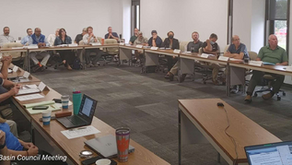What's the Difference in Criticality and Risk in Your Asset Management Program?
- JD Solomon
- Aug 16, 2024
- 3 min read

“We used criticality to start our vulnerability assessments,” a somewhat confused project manager stated. We also use criticality in our emergency response plans. Neither of those seem to match what our asset managers are doing when it comes to determining risk.” The story is a familiar one, but let's start with the difference between criticality and risk in your asset management program.
What is Criticality?
Criticality is a measure of the relative importance of something to an organization's mission or objectives. I prefer using critical and importance synonymously. Merriam-Webster defines critical as being indispensable or vital.
Overdoing Criticality Analysis
The most common mistake in criticality analysis is overdoing it. Review your business's mission and objectives (verify the context). Then, ask those closest to the action what is most important. Between 20 and 25 percent of your assets or subsystems are most critical.
It doesn't matter why something is important (indispensable, vital). If most people have it on their list, for whatever reason, then it's critical.
Consultants and academics like to overdo criticality by dissecting it and then doing weighting and funny math. As reliability-centered maintenance guru John Moubray wrote in 1992, the criteria and weightings vary widely from company to company and criticality vendor to vendor (and it is still the same 50 years later). As Moubray concludes, "The process of identifying significant items should be quick, approximate, and conservative." Avoid overdoing and overcomplicating your criticality analysis.
Criticality in Systems and Reliability Engineering
In systems engineering and reliability engineering, we address systems or subsystems of higher importance to an organization with fault prevention measures. Fault prevention falls into two classes: fault avoidance (usually in de-rating stresses or higher performance criteria) or fault tolerance (usually in the form of redundancy).
Some Specific Applications of Criticality
Criticality is primarily used for prioritization.
Condition Assessments
Preventative Maintenance Program Improvement
Work Prioritization
Inventory Management and Critical Spares
Predictive Maintenance Programs
Health and Safety Improvements
Design or Re-designs
O&M Budget Development
CIP Prioritization
Communications
What is Risk?
Risk is defined as the effect of uncertainty on objectives. A layperson’s definition is risk in the deviation from expectations.
Risk is situationally specific and can be evaluated differently at an organization's corporate, operations, or business unit levels. Risk can also be expressed in over two dozen ways, including the multiplicative product of the consequences and likelihood of failure.
Key Questions When Evaluating Risk
Evaluating risk is richer and more robust than evaluating criticality in your asset management program. Some of the key questions when evaluating risk are:
What is the context (scenario)?
Should we use a qualitative or quantitative method?
Is our data quality commensurate with the assessment methodology?
How do we establish system boundaries?
What is our definition of failure?
Over what period of time are we evaluating risk?
Some Specific Applications of Risk
Risk can be used as a prioritization tool in ways similar to criticality. Risk assessment informs strategies for managing potential problems, such as implementing preventive measures or planning for contingencies.
If a quantification method such as Monte Carlo analysis is used to evaluate risk, risk can be used in measured applications such as:
Renewal and Replacement Financial Forecasts
Asset Health Forecasts (Future Condition of Assets)
Prioritization for Additional Data Collection
Predictive Maintenance Scheduling
Capacity Planning and Resource Allocation
What’s the Difference in Your Asset Management Program?
One common misconception is to equate criticality and risk. Criticality is the more general case, and risk applies more granularly. Criticality is often a qualitative assessment (high, medium, low), while risk typically involves qualitative and quantitative analysis (such as risk score combining likelihood and impact or Monte Carlo analysis). Both criticality and risk can be used to determine a place to start, but risk takes more time to assess. Risk is a much more powerful tool when quantification methods are used and is especially helpful for big decisions.
JD Solomon Inc. provides solutions for program development, asset management, and facilitation at the nexus of facilities, infrastructure, and the environment. Sign up for monthly updates related to our firm.
JD Solomon is the founder of JD Solomon, Inc., the creator of the FINESSE fishbone diagram®, and the co-creator of the SOAP criticality method©. He is the author of Communicating Reliability, Risk & Resiliency to Decision Makers: How to Get Your Boss’s Boss to Understand and Facilitating with FINESSE: A Guide to Successful Business Solutions.







Comments